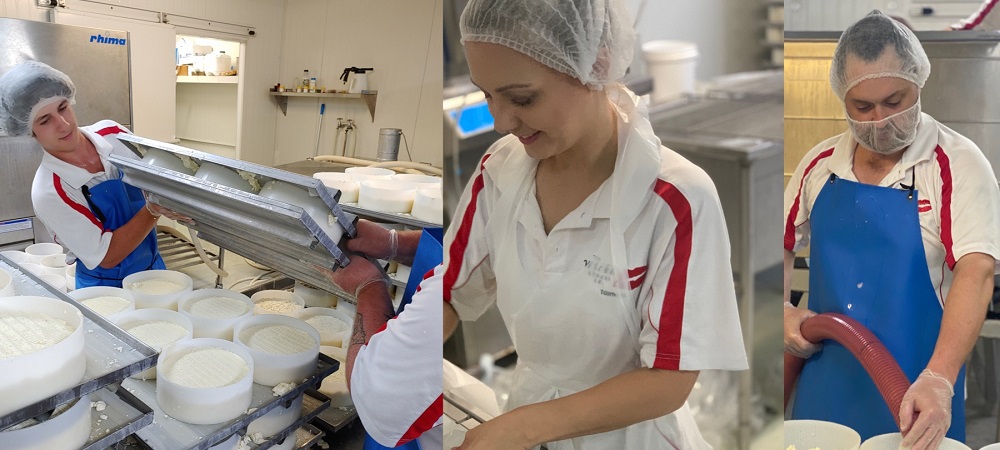From Thomastown to Your Table: The Quality of Floridia Cheese Melbourne
Opening the Secrets of Artisanal Cheese Making: A Step-by-Step Do It Yourself Guide
In the realm of culinary workmanship, artisanal cheese making stands as a testimony to the fragile equilibrium in between practice and technology. As we embark on this journey to demystify the art of creating beautiful cheeses, we are faced with a tapestry of secrets and skills waiting to be deciphered.
Selecting the Right Milk
When starting the journey of artisanal cheese production, the choice of milk plays a critical role in figuring out the high quality and attributes of the end product. The kind of milk picked impacts the flavor, texture, and overall account of celebrity. Raw milk, directly from the animal, is preferred by many artisanal cheesemakers as a result of its unique mix of enzymes, microorganisms, and flavor compounds. Nonetheless, making use of raw milk features risks and guidelines, making pasteurized milk a much safer option for novices.
When choosing milk for cheese production, it is very important to think about the fat content. Higher fat web content in milk can lead to a creamier and richer cheese, while reduced fat content might lead to a drier and stronger appearance. Furthermore, the resource of the milk, whether from cows, goats, sheep, or buffalo, contributes distinctive flavors and features to the cheese (Melbourne Made Cheese). Each kind of milk brings its own subtleties, permitting for a broad array of cheese varieties to be crafted based on the selected milk. Inevitably, the selection of milk is an essential choice that sets the foundation for a successful artisanal cheese-making undertaking.
Culturing and Coagulating
To launch the cheese-making procedure, the essential steps of culturing and coagulating need to be meticulously executed to transform milk into curds and whey. Culturing involves introducing useful germs to the milk, which then starts the fermentation procedure. These microorganisms transform lactose (milk sugar) right into lactic acid, producing the acidic atmosphere needed for coagulation. The sort of culture utilized can considerably affect the flavor, texture, and ripening of the final cheese item.

The timing and temperature control throughout culturing and coagulation are important aspects that affect the last result of the cheese. Proper implementation of these actions is important to make sure the preferred texture, taste, and consistency of the artisanal cheese being produced.
Draining Pipes and Pressing Curds
After the milk proteins have coagulated and the curds have actually been check cut to launch whey, the next vital action in artisanal cheese making includes draining pipes and pushing the curds to attain the preferred texture and consistency of the last cheese product. Draining pipes is the process of separating the curds from the whey. This can be done by moving the curds into a cheesecloth-lined colander or mold and mildew and allowing the whey to drain off normally. The time for draining can differ depending on the type of cheese being made and the desired dampness content.
Pushing helps get rid of any type of continuing to be whey and compacts the curds to develop a solid cheese wheel. Appropriate draining pipes and pressing are important steps that substantially influence the quality and qualities of the artisanal cheese being created.
Aging and Flavoring Methods
Implementing thorough aging and flavoring methods is pivotal in improving the deepness and complexity of artisanal cheeses, raising their taste accounts to exquisite degrees of improvement and sophistication. Aging plays a vital role in establishing the one-of-a-kind flavors and textures that differentiate artisanal cheeses.
Flavoring methods additionally add significantly to the final taste of advice artisanal cheeses. Cheesemakers may select to present added flavors by integrating active ingredients such as natural herbs, spices, or perhaps fruits into celebrity throughout the manufacturing procedure. Additionally, some cheeses are washed or scrubed with different fluids, such as salt water or alcohol, to boost their tastes and textures.
Wrapping and Storing Cheeses

Conclusion
To conclude, grasping the art of artisanal cheese making entails meticulously selecting the appropriate milk, complying with precise culturing and coagulating processes, draining pipes and pressing curds effectively, and using various aging and flavor strategies. By complying with these actions vigilantly and with interest to information, you can create your own scrumptious and distinct cheeses in your home. Bear in mind to cover and store your cheeses appropriately to make certain optimal taste and texture advancement. Satisfied cheese making!
Each kind of milk brings its own nuances, enabling for a large variety of cheese varieties to be crafted based on the chosen milk.After the milk proteins have coagulated and the curds have actually been reduced to launch whey, the following crucial action in artisanal cheese making entails draining pipes and pushing the curds to accomplish the preferred structure and consistency of the final cheese item. The majority of cheeses need to be covered in wax paper or cheese paper to enable them to breathe while shielding them from drying out. For cheeses that need to proceed visit site aging, such as bloomy peels or cleaned skins, ensure they are saved in a cool setting like a cheese cavern or a refrigerator set to the appropriate temperature level. By paying interest to the wrapping and storage of artisanal cheeses, cheese manufacturers and lovers can preserve the integrity of these specials and completely enjoy their intricate tastes.